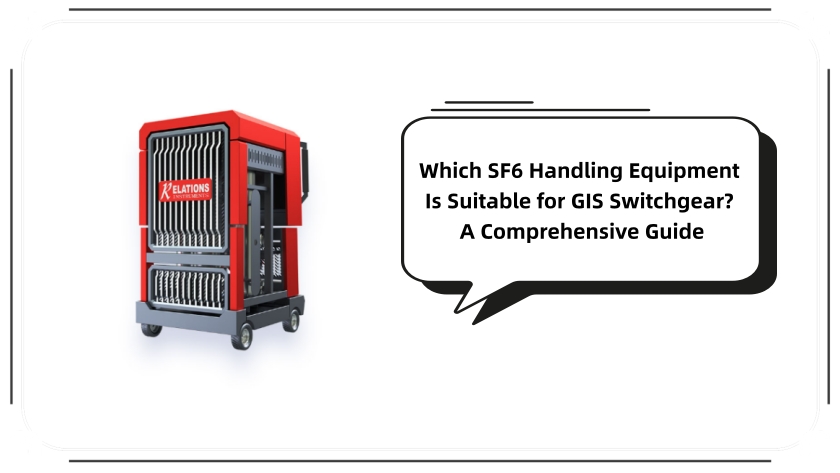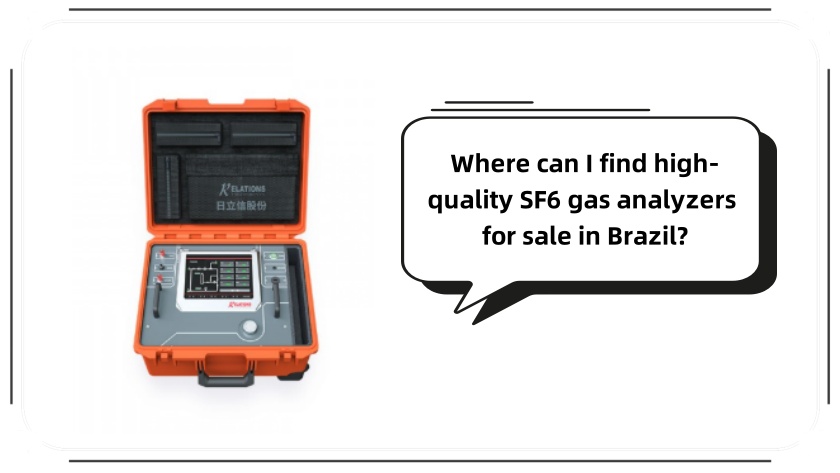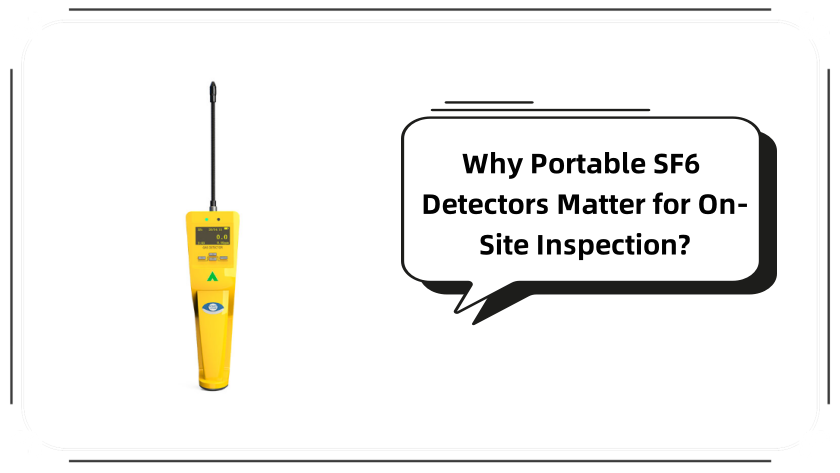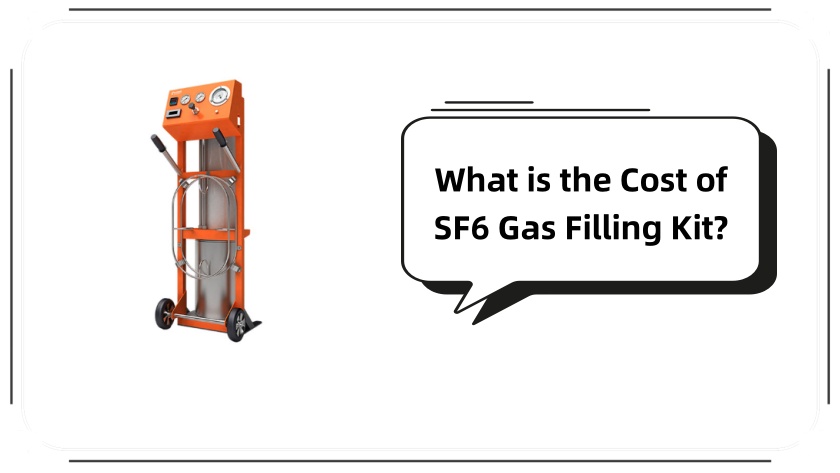Which SF6 Handling Equipment Is Suitable for GIS Switchgear? A Comprehensive Guide

Gas Insulated Switchgear (GIS) is widely used in power systems for its compact design, high reliability, and excellent insulation performance—all made possible by sulfur hexafluoride (SF6) gas. As a potent greenhouse gas and a critical medium for GIS operation, SF6 requires proper handling to ensure environmental compliance, equipment safety, and long-term performance. The question “Which SF6 handling equipment is suitable for GIS switchgear?” is therefore vital for power utilities, maintenance teams, and facility managers. This guide breaks down the key requirements, suitable equipment types, and selection criteria to help you make informed decisions.
1. Key Requirements of SF6 Handling Equipment for GIS Switchgear
Before choosing equipment, it’s essential to understand GIS switchgear’s unique demands for SF6 handling. Unlike general electrical equipment, GIS relies on SF6’s purity (≥99.9%) and low moisture content (<50 ppmv) to maintain insulation and arc-quenching capabilities. Additionally, global regulations (e.g., EPA’s SF6 emission limits, IEC 60480) mandate minimal gas leakage (<1% per year) to reduce environmental impact. Thus, suitable SF6 handling equipment for GIS must meet four core requirements:
High Recovery Efficiency: To minimize gas loss, equipment should recover ≥99.5% of SF6 from GIS tanks.
Precise Purification: It must remove moisture, oil, and particulate impurities to restore SF6 to usable purity.
GIS Compatibility: Interfaces (e.g., flanges, valves) must match common GIS brands (ABB, Siemens, GE) to avoid leaks during connection.
Mobility or Stationarity: On-site maintenance requires portable units, while large GIS substations may benefit from fixed skid-mounted systems.
2. Suitable SF6 Handling Equipment Types for GIS Switchgear
Not all SF6 handling equipment works for GIS—below are the four most compatible types, tailored to GIS’s operational needs:
2.1 SF6 Gas Recovery Units
SF6 recovery units are non-negotiable for GIS maintenance (e.g., tank replacement, leak repairs). They extract SF6 from de-energized GIS compartments, compress it into cylinders, and remove impurities via filters and dryers. For GIS, look for units with:
High Vacuum Capacity: Able to pull GIS tanks to ≤1 mbar (absolute) to ensure complete gas extraction.
Dual-Stage Compression: Prevents SF6 from liquefying during recovery (critical for high-volume GIS).
Portability: Wheeled or trailer-mounted designs for easy movement between substation bays.
Use case: Annual GIS maintenance or emergency SF6 removal after a fault.
2.2 SF6 Gas Filling Equipment
When refilling GIS with SF6 (new installations or post-maintenance), precise filling is critical—over/under-pressurization damages seals or reduces insulation. Suitable filling equipment includes:
Pressure-Regulated Systems: Maintain a steady flow rate (e.g., 0.5–2 kg/h) to avoid turbulence, which traps moisture.
Integrated Moisture Monitors: Real-time ppmv readings to stop filling if moisture exceeds limits.
Gas Heating Modules: Pre-warms SF6 cylinders in cold climates to prevent pressure drops during filling.
Use case: Commissioning new GIS switchgear or replenishing SF6 after recovery.
2.3 SF6 Gas Purification Systems
Reusing SF6 (instead of buying new) cuts costs and emissions—but only if impurities are removed. GIS-specific purification units:
Multi-Stage Filtration: Combines coalescing filters (for oil) and molecular sieves (for moisture) to reach ≥99.9% purity.
Continuous Operation: Ideal for large GIS substations that reuse SF6 across multiple bays.
Emission-Free Design: Sealed loops to prevent accidental SF6 release during purification.
Use case: Reconditioning SF6 recovered from aging GIS for reuse in newer units.
2.4 Integrated SF6 Handling Skids
For large-scale GIS substations (e.g., 220 kV or higher), integrated skids combine recovery, filling, and purification in one system. Benefits include:
Space Efficiency: Compact design for fixed installation near GIS banks.
Automated Controls: Touchscreen interfaces to reduce human error (e.g., auto-shutoff if purity drops).
Remote Monitoring: Cloud connectivity to track gas levels, efficiency, and maintenance needs.
Use case: Permanent SF6 management at utility substations with multiple GIS switchgear bays.
3. Critical Factors to Consider When Choosing
Beyond equipment type, these factors ensure compatibility with your GIS:
Regulatory Compliance: Verify the equipment meets local standards (e.g., EPA SNAP for the U.S., EU F-Gas Regulation) to avoid penalties.
GIS Size and Voltage: Low-voltage GIS (11 kV) may only need portable recovery units, while high-voltage (550 kV) requires industrial-grade systems.
After-Sales Support: Choose manufacturers that offer GIS-specific training (e.g., interface alignment) and fast spare parts delivery (e.g., filter replacements).
Cost of Ownership: Compare energy efficiency (e.g., kW/h per kg of SF6 recovered) and maintenance frequency—cheaper units often have higher long-term costs.
4. FAQ: Common Questions About GIS Switchgear SF6 Equipment
Q: Can I use a general-purpose SF6 unit for GIS?
A: No—general units lack GIS-specific features (e.g., high vacuum, compatible interfaces) and may cause leaks or impure gas, leading to GIS failures.
Q: What’s the minimum recovery rate for GIS equipment?
A: Aim for ≥99.5% to comply with IEC 60480 and minimize emissions.
Q: How often should SF6 handling equipment be calibrated?
A: Annually, or after 500 hours of use—calibration ensures accuracy of pressure, purity, and moisture sensors.
Choosing the right SF6 handling equipment for GIS switchgear depends on your GIS size, maintenance needs, and regulatory obligations. For on-site repairs, portable recovery units are ideal; for large substations, integrated skids offer efficiency. Always prioritize high recovery/purification rates, GIS compatibility, and compliance with global standards to protect your equipment, reduce costs, and meet environmental goals. If unsure, consult a manufacturer with experience in GIS-specific SF6 solutions—they can tailor equipment to your exact switchgear model and operational needs.
Leave A Message
Your email address will not be published. Required fields are marked *





